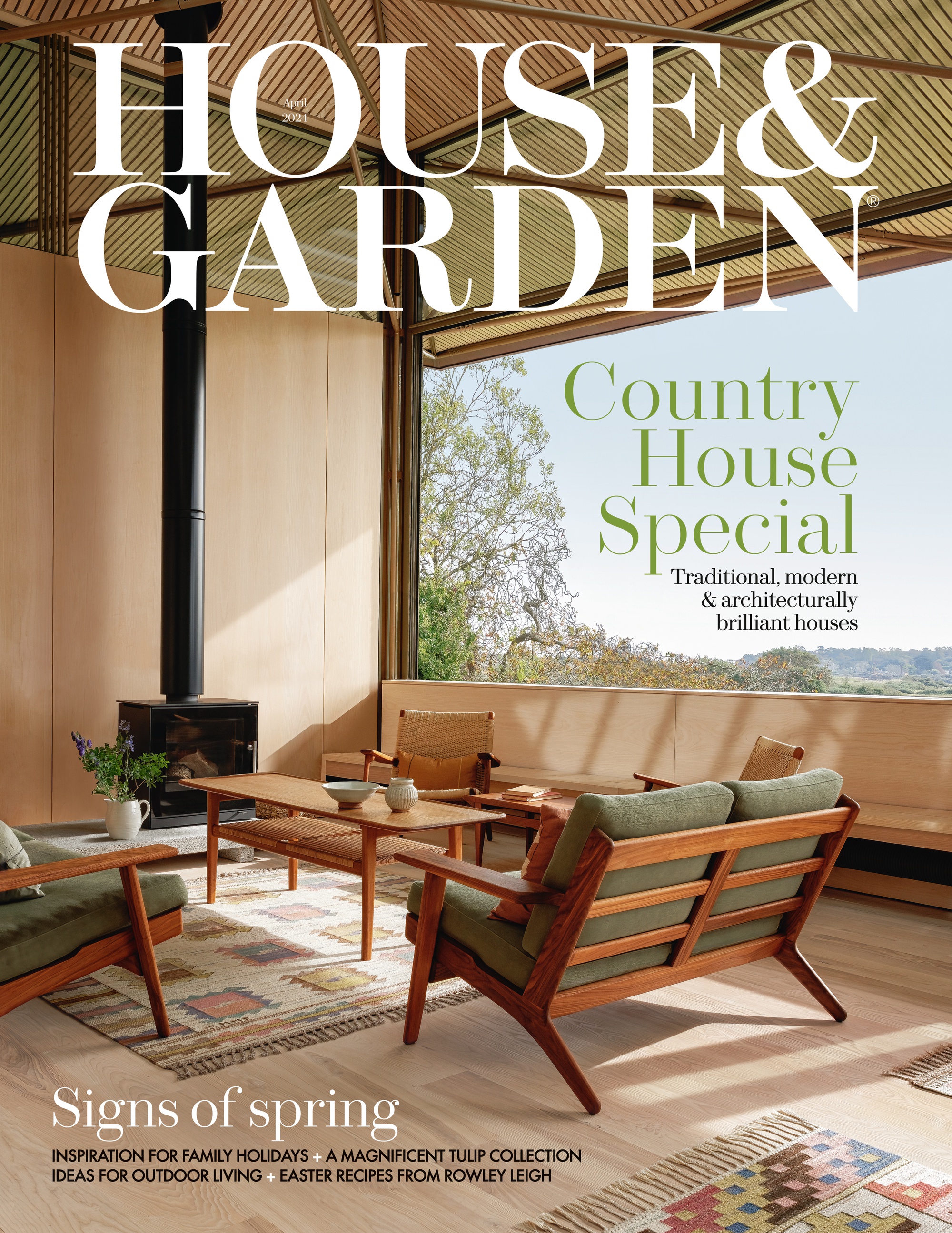Saltmarsh House - House & Garden
APRIL 2024
TEXT GRACE MCCLOUD
Images Owen Gale
Download the article here
Visit the House & Garden website here
Those who are familiar with this part of the world may have seen the building before. A pavilion topped by a tessellation of pyramidal roofs in recycled copper, it is visible from a public causeway running across the tidal marshland that the plot overlooks. Those passing may also be aware that it did not always have this form.
Until not so long ago, there were some stocky-looking 19th-century stables here, once part of a small estate, which had been converted during the 1950s into an unbeautiful but perfectly polite bungalow. ‘It was intriguing to me that whoever designed the previous building didn’t rate that seaward outlook,’ says the owner, pointing out that the structure was not even positioned in the best patch. ‘Instead, they had ruined what was clearly a lovely, peaceful place,’ she adds. Her proposed solution was relatively simple: move the footprint of the building and angle it to maximise the view. In terms of its look, the verandas and over-hanging eaves of farmhouses on the island of Shikoku – restored by the Japanologist Alex Kerr – were a lodestar. All she needed now was an architect.
Having asked her son, an architecture student, whom he would choose to build a house, in 2017, she landed on Níall McLaughlin (it transpires that the architect had been particularly encouraging of her son’s work as a visiting university critic). She was immediately taken by his distinctive approach, one that focuses on light and materials and forgoes any particular style in favour of feeling. As Níall puts it, ‘I design buildings as experiences rather than crafted objects in space.’ He is, he explains, guided less by aesthetics than by imagining ‘what it would feel like to walk through that door, to sit in that room, to hear the rain falling outside the window’.
Níall recalls not needing much convincing to take on the commission. ‘Two things about this project excited me straight away – the clients and the site,’ he says, describing the beauty of the landscape, the watery light, the wildlife that flocks here (it is a bird sanctuary) and the oak woodland, which has since been extended by the landscape architect Kim Wilkie and will one day grow to fill the area behind the house. ‘The clients were also an architect’s dream, as they were open to an adventure in design.’
The owner remembers explaining to Níall her ambitions for the site and watching as, in real time, he sketched out a proposal. Remarkably – perhaps almost unthinkably – Níall, the project architect Alastair Browning and the owner hardly deviated from that early back-of-an-envelope sketch. Seeing Saltmarsh now, it is not hard to see why. Indeed, RIBA shortlisted it for House of the Year in 2023.
At the heart of the plan is a large atrium-like space clad externally in accoya and internally in ash, which gleams in the light. Vast motorised picture windows all but disappear into the floor, removing any distinction between inside and out. Overhead, meanwhile, the pyramidal copper roof is lined with timber and has slatted shards of glass to help filter the sun. At one end of this soaring space is a wood-burning stove around which sofas and armchairs huddle; at the other, through a glass door, is a large veranda that feels like an extension of the room.
The bedroom, the bathroom and the kitchen, conceived as discrete modular cells, are serried along the woodland-facing side of the building. Everything is arranged under the roof ’s uniting superstructure, which, made of fine pieces of steel like so many bicycle-wheel spokes – or, as Níall describes it, a ‘cat’s cradle’ – lends the building an astonishing air of lightness. It looks as though it might have just landed gently on its feet. ‘It reminds me of Níall’s ecclesiastical buildings, which I had admired since coming across his work,’ says the owner. Not for their holiness, she explains, but for their stillness and their purity. It is an idea that Níall seems pleased with: ‘My ambition was to create a contemplative space, one that framed the landscape and the weather in a way that meant the clients could engage with it – or feel protected from it.’ And he has managed it deftly, for this remarkable house – one where glass can coruscate in the flashing light one minute before disappearing into thin air the next – is a place of both reflection and reflections. ‘I knew whatever we built here had to be worthy of the extraordinary site,’ says the owner. ‘I feel that together we have achieved this.’
In the short time since the house’s completion in 2021, the accoya has developed a distinguished silvery shimmer and the roof ’s copper has bruised beautifully in the brackish air, billowing purple and conker brown. (Níall wonders if perhaps one day it might carbonate, turning a jewel-like shade of seafoam.) The landscape, meanwhile, has started to take shape. The indigenous woodland that Kim conceived behind the house has begun to shoot up and rare-breed sheep will soon come to graze on the meadow (another of his land-led ideas). But most importantly, the owner and her family are settled here and happy. An ending, with a new beginning – the best type of story there is.
